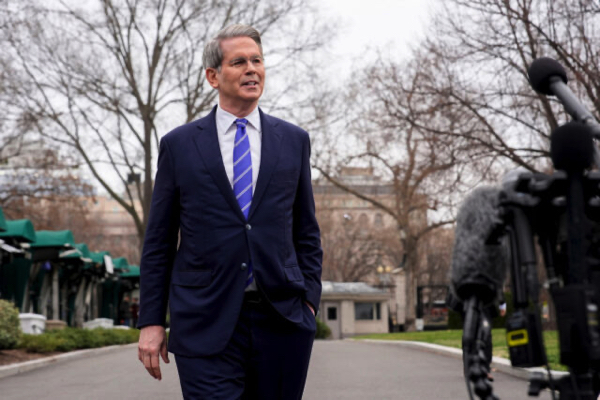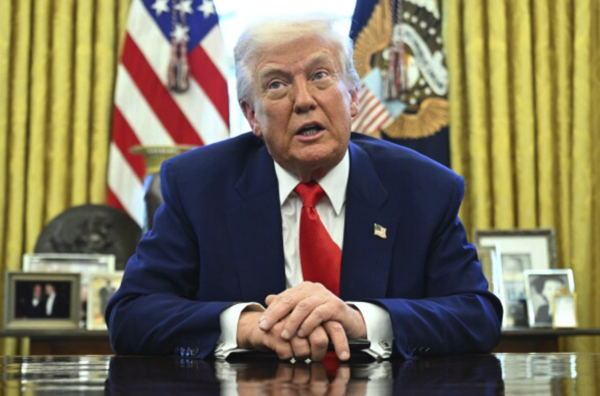 Parler
Parler Gab
Gab
- BTC fell sharply to $109,200 despite the Federal Reserve's anticipated 0.25 percent rate cut and confirmation of ending quantitative tightening (QT) by December. Traders had priced in dovish policy, but Chair Jerome Powell's cautious remarks about future cuts triggered further declines.
- The Fed cut rates amid slowing economic indicators (rising unemployment, persistent inflation above two percent), but Powell's reluctance to commit to further cuts injected uncertainty. Markets adjusted expectations, lowering December rate-cut odds from 90 percent to 71 percent.
- Broader economic concerns include President Donald Trump's tariffs (fueling inflation), AI-driven stock volatility and potential government shutdowns. Analysts warn BTC's near-term trajectory depends on upcoming macroeconomic data, with key resistance at 110,700 and support at 105,400.
- Powell confirmed QT (draining $1 trillion in liquidity since 2022) will end by December, which historically benefits risk assets like BTC. However, policy remains data-dependent, leaving markets uncertain about future liquidity conditions.
- BTC has historically reacted sharply to Fed shifts (e.g., 2020's crash and recovery). While short-term turbulence persists, institutional demand, ETF inflows and regulatory improvements could support long-term gains—but downside risks remain if BTC breaches $100K support.
Market reaction: From optimism to caution
Prior to the Fed's announcement, traders had overwhelmingly expected a December rate cut, with CME FedWatch data showing a 90 percent probability. However, Powell's remarks caused markets to sharply recalibrate expectations—futures now price just a 71 percent chance of another cut this year. "Recent history has shown that the FOMC leads to a price drop in BTC, followed by a move up," analysts at Hyblock noted. "If price does dip post-FOMC and signs of bullish confluence emerge, such as bid-heavy orderbooks, it would likely present good opportunities for investors." Yet Bitcoin's near-term trajectory appears muddled. While some analysts anticipated that lower rates and the end of QT would boost liquidity—potentially benefiting risk assets like BTC—Powell's reluctance to commit to further easing injected fresh uncertainty. Beyond monetary policy, traders remain wary of broader economic risks, including:- President Donald Trump's tariff policies – The ongoing trade war has introduced inflationary pressures, complicating the Fed's balancing act.
- Tech sector volatility – Questions linger over whether AI-driven stock rallies are sustainable or speculative bubbles.
- Government shutdown threat – Political gridlock could further destabilize markets.
Historical parallels: Bitcoin's Fed sensitivity
Bitcoin has historically reacted sharply to Fed policy shifts. During the emergency rate cuts of March 2020, BTC initially plunged nearly 39 percent before staging a massive recovery. This week's volatility underscores that crypto markets remain tightly correlated with macroeconomic sentiment—particularly Fed expectations. Riya Sehgal, Research Analyst at Delta Exchange, took note that the crypto–Nasdaq correlation spiked to 0.88, its highest since June, which underscores how tightly digital assets remain tethered to macro sentiment. Despite short-term turbulence, some analysts remain optimistic about Bitcoin's long-term prospects. O'Shea pointed to growing institutional demand, ETF inflows, and improving U.S. regulation as factors that could propel BTC to new highs later this year. However, Vikram Subburaj, CEO of Giottus.com, warned that traders are now eyeing 103,000–100,000 as critical support levels if downside pressure persists. The Fed's latest move highlights the precarious balancing act facing policymakers: stimulating growth without reigniting inflation. For Bitcoin, the immediate reaction suggests traders remain cautious—but if liquidity conditions improve and risk appetite returns, BTC could yet reclaim its bullish momentum. For now, all eyes remain on Powell's next move—and whether the Fed's December meeting brings another surprise. Watch the video below about Bitcoin hitting new all-time high above $120,000. This video is from the newsplusglobe channel on Brighteon.com. Sources include: Cointelegraph.com BrightU.ai Decrypt.co BitcoinMagazine.com TheEconomicTimes.indiatimes.com Brighteon.comTreasury Secretary Bessent: China’s rare earth export curbs a “real mistake”
By Ramon Tomey // Share
AI farm robots and food aid stalemate raise concerns over jobs and food security
By Finn Heartley // Share
Wind energy costs surge under Trump policies, raising concerns over affordability
By Belle Carter // Share
Nvidia shatters records as first $5 trillion company amid AI boom, but bubble fears loom
By Kevin Hughes // Share
Trump and Xi strike a tentative truce in an economic cold war
By Willow Tohi // Share
Chipotle’s shares drop amid wider consumer pullback; younger diners tightening spending
By Ramon Tomey // Share
Trump and Xi Jinping just rescued Europe's auto industry from collapse
By ljdevon // Share
The silent legacy of head trauma and the soothing path to brain health
By willowt // Share
The movement prescription: How simple exercises combat high blood pressure
By willowt // Share
AI farm robots and food aid stalemate raise concerns over jobs and food security
By finnheartley // Share
Study: Sleep deprivation forces the brain into micro-sleeps--with dangerous consequences
By bellecarter // Share










